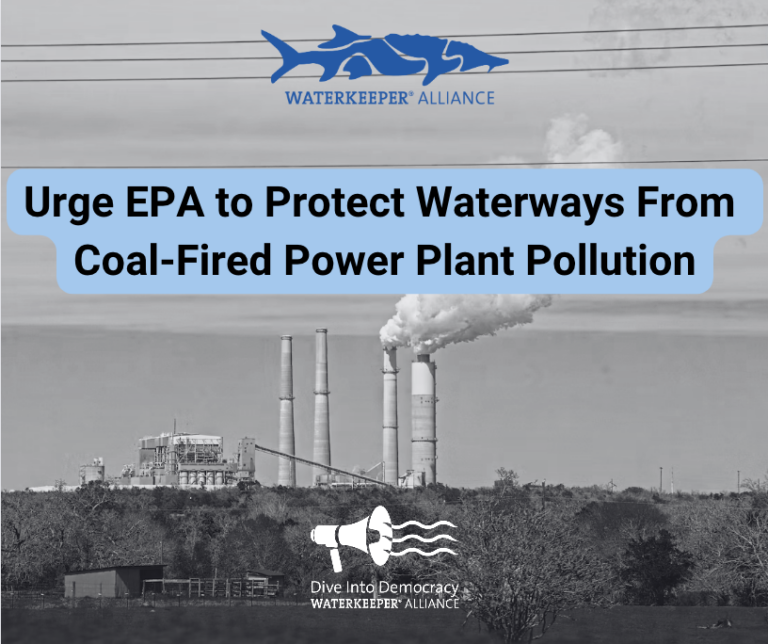Urge EPA to Protect Waterways From Coal-Fired Power Plant Pollution
By: Kelly Foster

In response to decades of advocacy and litigation by Waterkeeper Alliance and our partners, the U.S. Environmental Protection Agency (EPA) is now proposing new, more protective wastewater treatment standards for coal-fired power plants to control their discharges of pollutants like toxic metals, chlorides, bromide, nutrients, and other pollutants into waterways across the country. This is so important as even small amounts of these pollutants discharged into waterways can harm aquatic life, damage ecosystems, and contaminate fisheries and drinking water supplies.
These new standards would apply to every coal-burning power plant in the U.S. and require these facilities to install modern technology to treat and manage contaminated wastewater, preventing 584 million pounds of toxic pollutants from being discharged into rivers, lakes, and streams every year. For example, EPA’s proposal would require coal-fired power plants to upgrade their wastewater treatment technology to achieve zero discharge of pollutants from two of the largest toxic wastewater streams coming from these plants—bottom ash wastewater and flue gas desulfurization (FGD) wastewater.
However, to fully address toxic pollution from these plants, EPA must also extend the proposed zero discharge standard to leachate and legacy wastewater, both of which contain harmful pollutants that can be treated using available zero-discharge technologies. EPA also needs to shorten the deadline for compliance from the proposed date of December 2029 to ensure that coal plants adopt these new standards as quickly as possible, and no later than three years from the date the rule is finalized as required by the Clean Water Act.
Toxic water pollution from coal-fired power plants can cause severe health and environmental problems including cancer, heart disease, reproductive failure, stroke, brain damage in children, and deformities and reproductive harm in fish and wildlife. Once in the environment, these contaminants can remain there for many years, accumulating in fish and other animals. Communities of color and low-income communities are disproportionately burdened by this pollution.
Prior to 2015, coal-fired power plants and their massive coal ash disposal ponds were the #1 source of toxic water pollution in the country and most plants had no limits on their toxic discharges. In September 2015, also in response to litigation by Waterkeeper Alliance and partners, EPA finalized revised limits on the amount of dangerous heavy metals that these facilities were allowed to discharge into waterways for the first time in decades. Unfortunately, in 2020, these protections were weakened and rolled back by then-EPA Administrator Andrew Wheeler—a former coal lobbyist forcing us to file suit again to enforce the Clean Water Act and protect the public.
Data from EPA shows that the new standards would dramatically reduce discharges of toxic pollutants from these facilities into the nation’s waters and would help protect the public and the country’s drinking water, fisheries, and recreational waters against serious dangers. Data also shows that zero-discharge technologies are available and necessary to also control toxic pollution from facility leachate and legacy wastewaters and that technologies for all four wastewater streams can be installed to achieve compliance within 3 years.
That is why EPA must quickly finalize the strongest possible protective wastewater treatment standards for toxic pollution discharges from coal-fired power plants into the nation’s waters as required by the Clean Water Act and to require compliance with these new standards within 3 years.